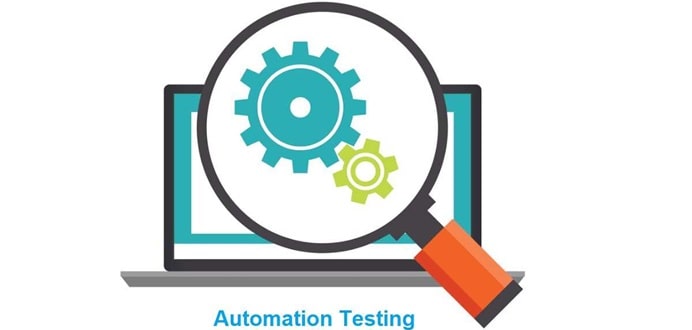Software applications are automatically tested using tools and scripts in automation testing. The automation testing process relies on software to run tests. It compares actual outcomes with expected results and reports findings without human intervention.
Automation testing identifies issues early in development to reduce manual effort in repetitive tasks and speed up the overall development process. Teams can improve test reliability, maintainability, and effectiveness by following the best practices.
This blog outlines the top automation testing best practices for 2024. It offers actionable insights to optimize your testing strategy. From planning and tool selection to ensuring test data security and maintaining independent tests, these guidelines cover all critical aspects to make your automation testing efforts successful and impactful.
Best Automation Testing Best Practices

Here are the top 25 automation testing practices that can help you conduct the testing process effectively:
Start with a Clear Plan
Begin with a well-defined plan. Outline your goals, scope, and necessary resources. Identify which tests should be automated based on their importance and frequency. A clear plan helps improve the automation process and ensures that efforts are focused and efficient. It also establishes expectations and outlines a path for achieving your automation goals. This simplifies progress tracking and allows for adjustments as necessary.
Choose the Right Tools
Choosing the correct tools is essential for effective automation. Seek out tools that integrate smoothly with your current tech stack and fulfill your project needs. Factors to consider include usability, support, and community engagement. The right tools can enhance your testing efficiency and effectiveness to enable smoother workflows and better results.
Focus on Test Maintenance
Regular review and maintenance of your test suite are essential. As software evolves, tests can become outdated. Keeping tests modular and up-to-date ensures they continue to work well. This means reviewing test cases regularly, updating them when needed, and removing old ones. A well-maintained test suite is more reliable and easier to manage which lowers the risk of incorrect results.
Prioritize High-Value Tests
Not all tests are worth automating. Focus on tests that offer the highest value, such as those that are repetitive, critical, or require multiple configurations. Prioritizing high-value tests ensures that your automation efforts yield the maximum return on investment. This approach helps in concentrating resources on areas that have the most significant impact on software quality and stability.
Implement Continuous Integration
Integrate automated tests into a CI pipeline to ensure they run automatically with each code change. This practice helps catch issues early to improve code quality and reduce the time spent on manual testing. CI allows for rapid feedback to enable developers to address defects quickly and maintain a high standard of code quality throughout the development lifecycle.
Write Reliable Tests
Reliable tests produce consistent results. Avoid flaky tests by using stable selectors, waiting for elements, and handling dependencies correctly. Consistency in test outcomes is crucial for trust in automation. By writing reliable tests, you ensure that your test suite provides accurate and dependable results, helping to identify genuine issues without false alarms.
Leverage Data-Driven Testing
Data-driven testing increases coverage by running the same tests with different inputs. This approach maximizes test coverage without duplicating tests. It allows for more comprehensive testing by validating the software against various data sets to ensure reliability across different scenarios.
Ensure Cross-Browser Compatibility
Testing on multiple browsers ensures your application works for all users. Automating cross-browser testing early helps find browser-specific problems. This makes sure your app works well on different browsers and makes it easier for more people to use.
Incorporate Visual Testing
Visual testing helps catch UI discrepancies that functional tests might miss. Automating visual comparisons can detect unexpected visual changes to ensure the UI remains consistent with design specifications. This practice enhances the overall quality of the user interface to provide a visually appealing experience for users.
Monitor Test Metrics
Monitor important metrics like test coverage, pass/fail rates, and execution time to understand how well your automation strategy is working. These metrics pinpoint areas for improvement, help optimize your test suite, and ensure your automation efforts achieve the desired results.
Utilize Parallel Testing
Running tests in parallel significantly reduces execution time. This approach is especially useful for large projects with many test cases. By running tests simultaneously, you speed up the testing process, allowing for faster feedback and quicker development iterations.
Parallel testing ensures that your test suite can handle extensive tests efficiently and improve overall productivity. It also helps to find problems early and fix them before they affect the final product. Parallel testing speeds up your testing and makes it more reliable.
Keep Tests Independent
Ensure each test is independent and doesn’t rely on other test results. This reduces the risk of cascading failures and simplifies debugging. Independent tests are more reliable and easier to manage. They help in quickly identifying and resolving issues, making the test suite more effective and maintainable. By keeping tests separate, you avoid interdependencies that can complicate troubleshooting. This practice leads to a more stable testing process and improves the overall quality of your software.
Secure Test Data
Keep sensitive data used in tests safe by anonymizing or masking it. This helps meet data protection rules and protects user privacy. Using secure test data practices helps maintain trust and avoids legal and ethical issues. It’s crucial to use non-sensitive data for testing to avoid potential breaches.
Regularly reviewing and updating your data security measures to meet evolving standards and threats ensures that your testing process remains safe and reliable to safeguard both your users and your organization.
Incorporate API Testing
API testing is crucial for backend validation. Automating API tests ensures that your APIs work as expected and integrate well with other components. This practice verifies the functionality, reliability, and performance of your APIs. This contributes to the overall stability and quality of the software.
Use Shift-Left Testing
It involves testing early in the development cycle. This helps detect and address defects sooner, reducing the cost and effort of fixing bugs later on. Testing early allows for proactive quality assurance to catch issues before they become bigger problems.
Develop Collaboration
Testing involves developers, testers, and stakeholders. Clear communication and teamwork ensure everyone contributes effectively to improve test quality and meet expectations. Regular collaboration helps identify issues early and optimize testing processes for better software quality.
Invest in Training
Keep your team updated with the latest automation tools and practices. Regular training and workshops help them stay skilled and adapt to new challenges. Investing in continuous learning ensures your team can effectively use automation technologies and methods for better results.
Adopt BDD for Clarity
Behavior-driven development frameworks help write tests in a business-readable language. This improves collaboration and ensures that tests cover business requirements. It improves communication between stakeholders to ensure the software meets all business needs.
Implement Version Control
Use version control systems for your test scripts. This lets developers and testers track changes and revert to previous versions if needed. Version control improves managing and tracking your test scripts.
Optimize Test Execution
Optimize your test suite by removing redundant tests and improving test logic. Regularly review and refactor your test cases to keep them efficient. Optimization ensures that your test suite remains lean and effective. This reduces execution time and resource consumption while maintaining comprehensive coverage.
Utilize Cloud-Based Testing
Cloud-based testing is another best practice of automation testing. It involves testing by using cloud resources and allows you to run tests on various setups without physical machines. It offers flexibility, scalability, and collaboration with diverse teams and members. You can test across multiple environments, operating systems, and devices. This ensures your application works in different settings.
LambdaTest is one of the most used cloud-based platforms which is an AI-powered test orchestration and execution solution that allows automation testing across 3000+ real devices, browsers, and OS combinations. It integrates with different automation testing tools like Selenium, Appium, Cypress, Playwright, etc that allows you execute the test under one platform. LambdaTest also integrates with test management and test reporting tools that help in analyzing the result of the automation testing.
Automation testing in LambdaTest also helps reduce costs and manage resources efficiently. It supports remote work, enabling teams to access testing environments from anywhere. You can handle extensive test suites and shorten execution times to ensure comprehensive testing of your application by using cloud platforms.
Implement Test Automation Frameworks
A test automation framework gives you a structured way to test. It includes reusable parts, guidelines, and best practices. This helps create and run tests consistently. A good framework reduces code duplication and makes test maintenance easier. Choose one that fits your project needs and supports modular test scripts. Frameworks also improve reporting and logging, giving clear insights into test results. Using a test automation framework makes your automation testing process efficient and helps team members work together effectively.
Perform Load and Performance Testing
Load and performance testing checks if your application can handle expected user loads. Automate these tests to simulate different traffic conditions and measure response times and resource use. This helps find performance issues early. Performance testing tools create realistic load scenarios, showing how your system performs under stress. Regular load and performance testing ensure your application works well even during peak times, providing a smooth user experience.
Incorporate Security Testing
Security testing finds vulnerabilities in your application. Automate security tests to find common threats like SQL injection and unauthorized access. Integrate these tests into your development process to catch issues early. Automated tools can scan your application and verify security measures. This helps protect sensitive data and ensure compliance with regulations. You can address risks and ensure your application is safe from cyber threats by including security testing in your strategy.
Conduct Usability Testing
Automate usability tests to assess user interaction ease in your app. Automated tools simulate user actions and find usability issues. This ensures your application is easy to use and meets user needs. Regular usability testing helps find design flaws and areas for improvement. You can continuously improve your application’s user interface and overall experience by including security testing in your strategy.
Conclusion
In conclusion, Following these automation testing best practices will greatly improve your software development process in 2024. They cover critical aspects from planning and tool selection to ensuring test reliability and security. Implementing them will lead to faster, more reliable automation testing cycles and improve software quality.
Keep updated with the latest trends and refine your approach to maintain effective automation efforts. Following these guidelines ensures your automation testing process is efficient and produces -quality software. Stay updated and regularly adjust your strategy to meet the evolving needs of software development.

Santosh Kumar is an editor at unfoldstuffs.com and a professional content writer. With years of experience he is passionate for creating engaging, informative and impactful topics.









